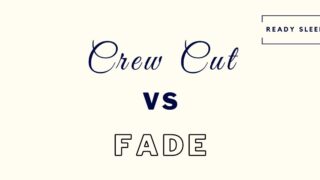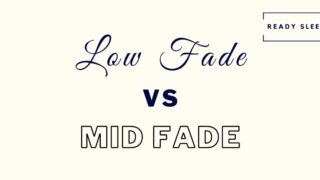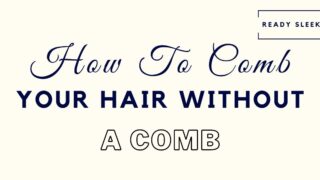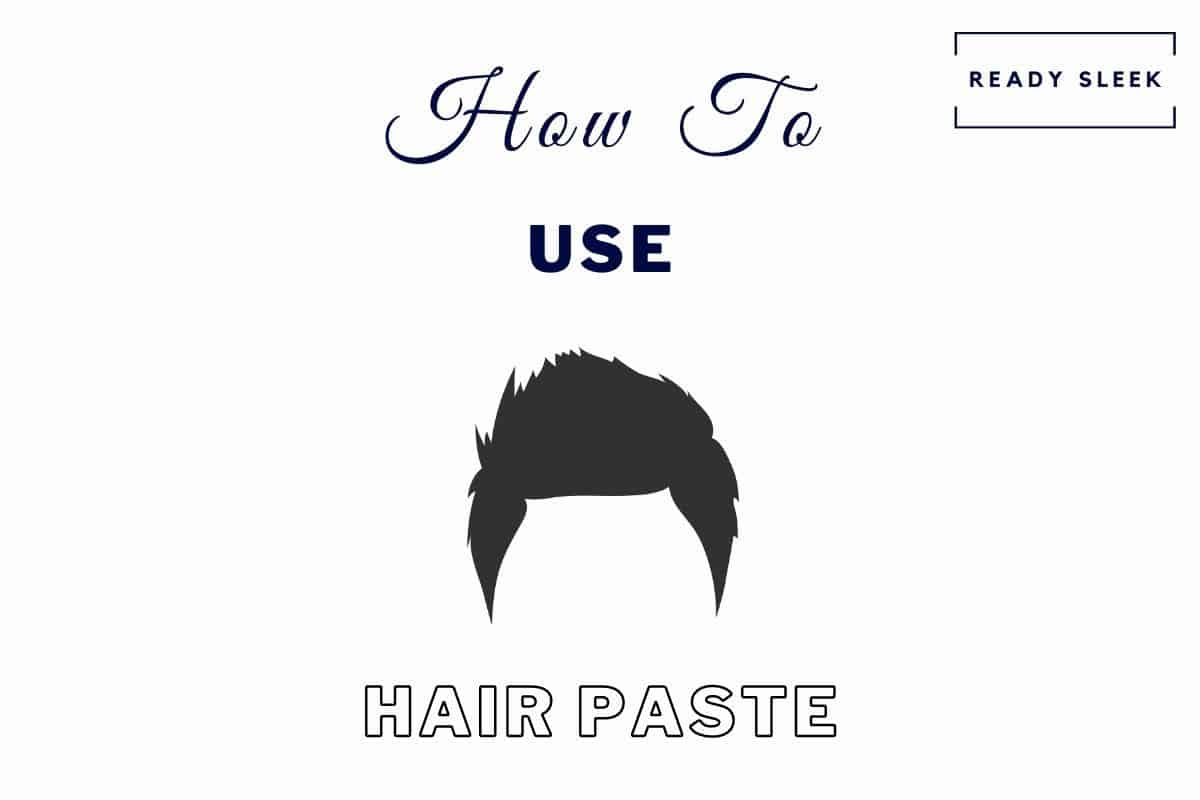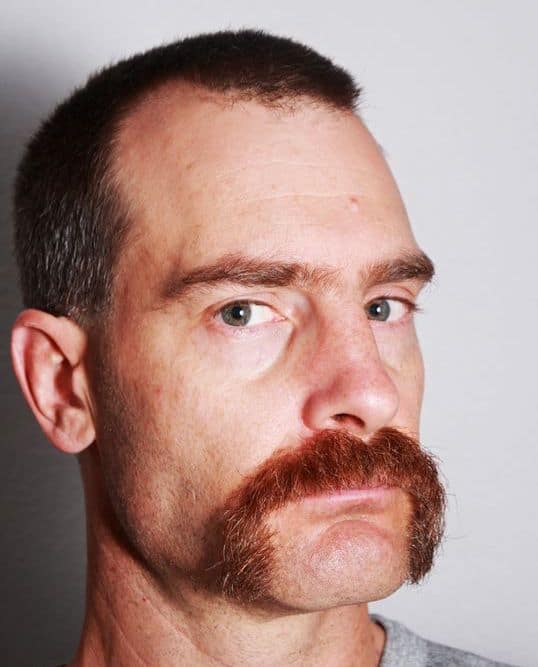You’d think that any style with the word “faux” in it was in some way an inferior imitation. But the faux hawk has been a surprising dark horse in the world of men’s style, now arguably as popular as some of the bigger hitters in the game.
It’s known for being a more subtle version of its big brother – the “mohawk”. But with this subtlety comes confusion.
The main confusion is actually identifying what a faux hawk is and distinguishing it from other modern men’s hairstyles.
That’s the confusion I’m looking to clear up today.
After showing and explaining exactly what a faux hawk is, I’ll be comparing it to other similar styles with photos to boot.
Once you’ve read this, you’ll have a much better idea of how the style differs from others and whether you want to style one for yourself.
Let’s get to it.
What Exactly Is A Faux Hawk?
The faux hawk is a style where there is a noticeable spiked or textured strip of hair on top. The sides and back are clipped shorter and blended into the top.

As the name so strongly suggests, it’s very closely related to the mohawk.
Here’s how it’s different.
While the mohawk also consists of a strip of hair on top, this strip is more defined and usually narrower.
It’s also disconnected from the clipped or shaved hair to either side of it, not blended. This gives the narrow strip of hair exceptional prominence, considering how it’s really the only hair you’ve got to look at.
Unlike the mohawk, the faux hawk consists of a more loosely defined strip of hair on top that blends into the hair on either side of it. This hair isn’t usually shaved and is simply clipped shorter than the strip and tapered downward.
The sides are usually faded.
The more subtle appearance of the faux hawk has made it a much more popular choice than the mohawk in mainstream culture.
Faux Hawk Vs Quiff
The quiff is a hairstyle where the forelock is swept upward and away from the forehead while the hair behind lays flat. Unlike the quiff, the faux hawk has all of the hair on top at a similar height, usually spiked or textured.
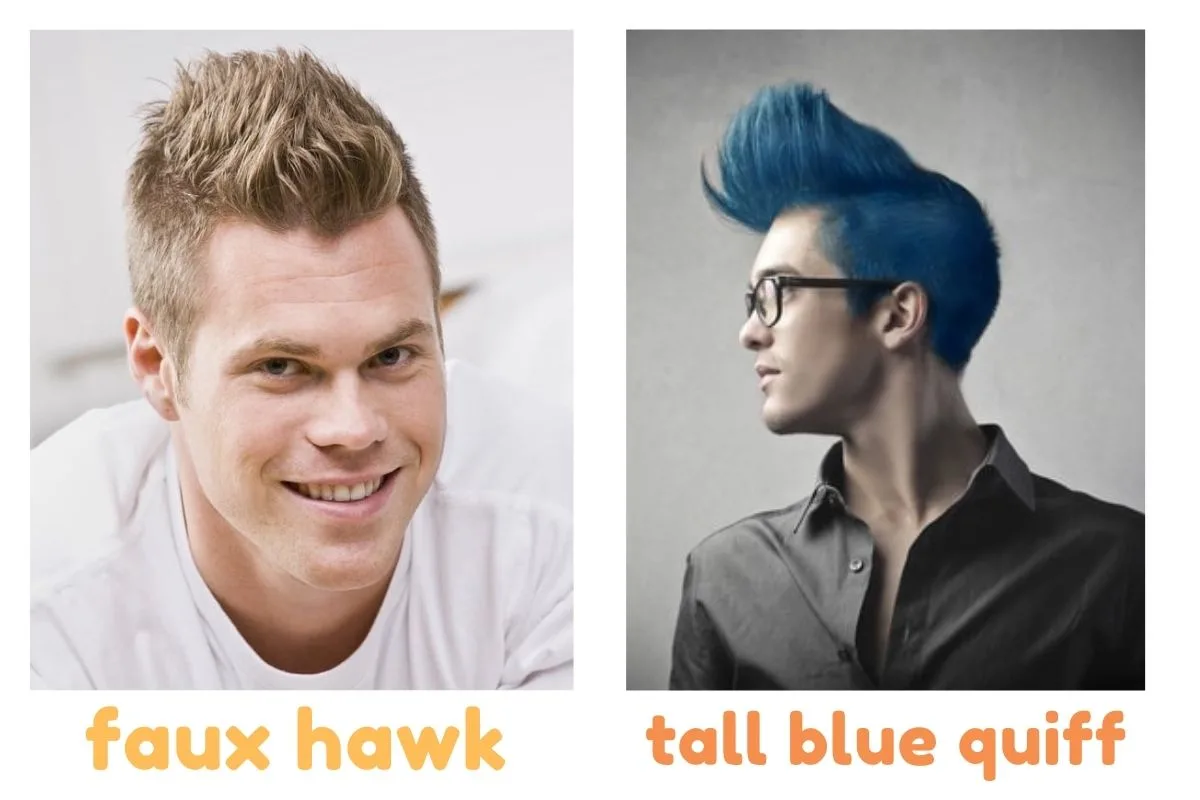
Much like faux hawks, quiffs usually have the hair on top blended and connected into the sides and back as opposed to disconnected.
The difference between them is what is done with the hair on top.
Quiffs are incredibly versatile – they can be short, tall, textured, wavy, side-swept, and so on.
But ultimately, what they all have in common is the fact that it’s only the forelock (front hair) that is swept upward.
Because of this, they’re usually a little more subtle and understated than the faux hawk, where all of the hair on top is usually spiked up.
How To Choose:
If you’re trying to decide between a faux hawk and a quiff, consider the following factors:
1. Faux hawks will generally draw more attention thanks to the eye-catching nature of the strip on top. If you’d rather go for subtlety, choose the quiff.
2. While both styles are relatively low maintenance and easy to style, the quiff will take less time to perfect as most of the focus is simply on the forelock.
Faux Hawk Vs Undercut
The undercut is a hairstyle where the hair on top is left long and disconnected from the short, buzzed-down sides. Unlike the undercut, faux hawks have a spiked strip of hair on top that is blended into tapered sides.
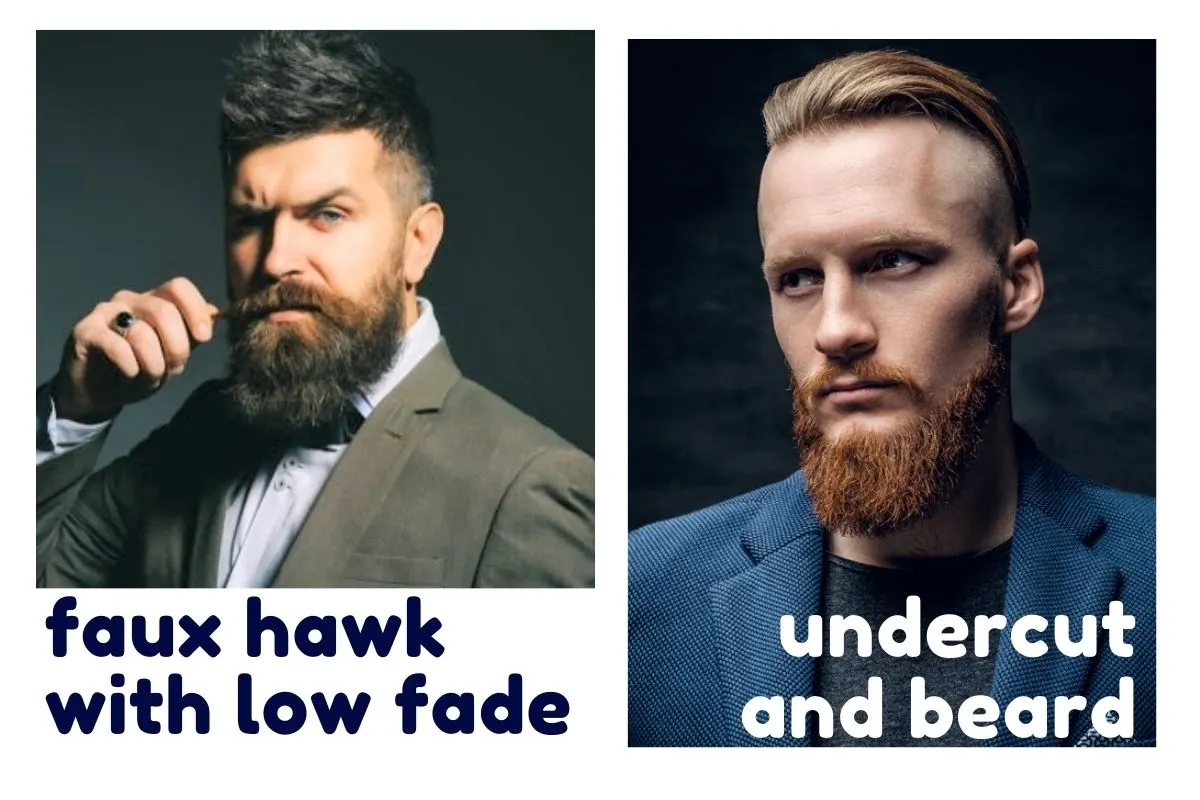
The main point here is that faux hawks have a connected appearance to them while undercuts have a disconnected appearance to them.
The faux hawk’s famous strip of hair is blended into the sides, while the long (and usually slicked back) top hair of the undercut isn’t blended into the sides.
This sharp transition from the short sides to the long top is what the undercut is known for. It makes it immediately eye-catching and sets it apart from the more common and subtle tapered styles of today.
With undercuts, you can pretty much do whatever you like with the hair on top. Spike it up, slick it back, tie it back into a top knot – the options are endless.
Because of this, the term “undercut” shouldn’t actually be considered a style in itself. It should be considered a feature that can be incorporated into many different styles.
What connects them all is simply the disconnection between the top and sides. Having said all of this, the most traditional form of the undercut usually has the hair on top slicked back.
The definition of a “faux hawk” is more tightly defined. You usually know what to expect with the hair on top – it has a strip-like appearance to it and is usually spiked up. The sides are also usually faded.
How To Choose:
1. Undercuts are less subtle than faux hawks due to their disconnected appearance. If you’re looking for a more understated appearance but still want long hair on top with short sides, go for the faux hawk.
2. Undercuts are generally more versatile than the faux hawk as you can do whatever you like with the long hair on top.
You could have it fall forward into a fringe or slick it back into a top knot. If you’d rather have this sort of choice, an undercut may be a better option for you than a faux hawk.
Faux Hawk Vs Crew Cut
Crew cuts have short, upright hair on top that’s blended into even shorter, faded sides. Unlike crew cuts, faux hawks have longer hair on top with a strip-like appearance to it and a spiky, layered texture.
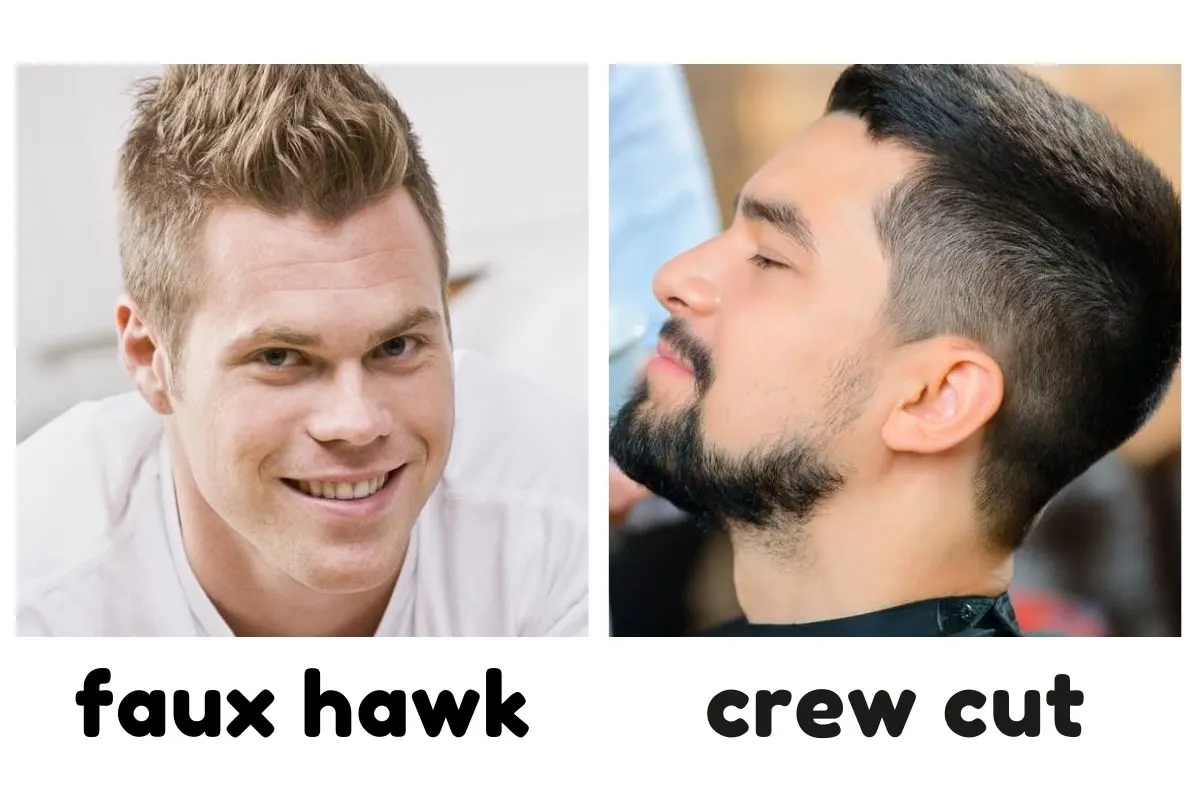
These two styles often lead to confusion given how similar they look.
Both faux hawks and crew cuts have the longer hair on top blending gradually into the shorter (and often faded) sides.
But what’s done with the hair on top is actually quite different between the two styles.
Once you’ve seen a few of them, they’re actually quite easy to distinguish from each other.
If the hair on top looks like it’s been spiked inward into a strip-like appearance (as you’d expect with a typical mohawk), it’s much more likely to be a faux hawk than a crew cut.
Crew cuts, don’t have this spiked and strip-like appearance on top. Instead, the hair at the front is longest before it graduates shorter as you go toward the back.
How To Choose:
Here are a couple of tips to help you decide between the crew cut and the faux hawk:
1. The clean-cut aesthetic of the crew cut does give it a touch more of a professional appearance than the often “messier” faux hawk.
2. Although both styles are quite easy to style, the faux hawk usually takes more time given the need to spike and layer the hair on top.
Faux Hawk Vs Mullet
Mullets consist of short, parted hair at the front and long, untied hair flowing downward at the back. In contrast, faux hawks have the hair on top a relatively similar length, spiked, layered, and blended into the faded sides and back.
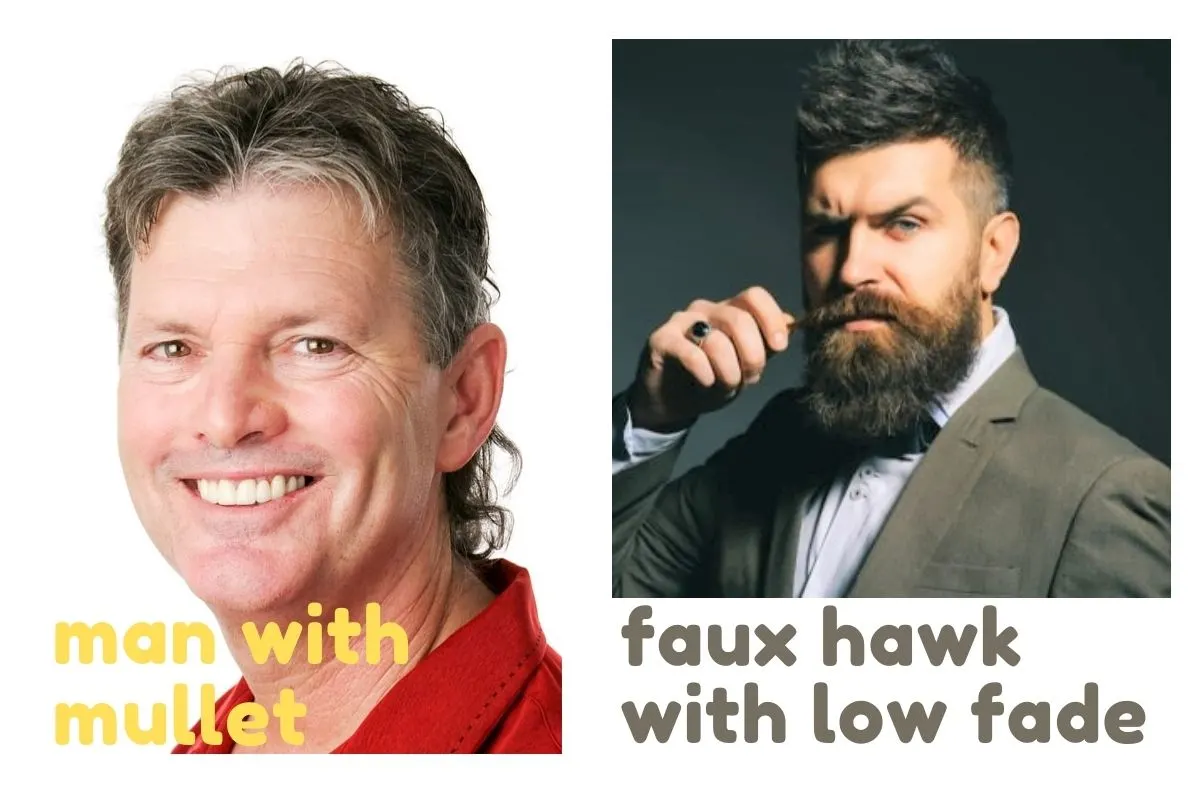
These two styles are very different from each other and usually easy to distinguish.
The main difference is that faux hawks do not have long hair flowing downward at the back. The back, together with the sides, are clipped short and blended into the longer hair on top.
While mullets are best known for the long hair at the back, faux hawks are known for the strip-like, textured, spiky hair on top.
Mullets aren’t anywhere near as popular as they used to be in the ‘70s and ‘80s but do seem to make comebacks from time to time.
The contrast between the short hair at the front and the long hair at the back is what gives it that typical off-kilter appearance that does appeal to some.
Ultimately, it’s a battle between the old and the new. While faux hawks are a modern take on a more classic style, mullets are a classic style that’s simply lasted a lot longer than people initially anticipated.
How To Choose:
Consider the following points when choosing between the faux hawk and the mullet.
1. If you’re looking for a more modern style, go for the faux hawk. While mullets are seen from time to time, they’re difficult to pull off due to their unmistakable retro appearance.
2. Mullets are higher maintenance than faux hawks because you’re dealing with longer hair. Long hair needs more washing, brushing, and TLC.
3. Faux hawks are more versatile and less attention-grabbing than mullets. If you’re looking for a more subtle style, go for the faux hawk. If, on the other hand, you’re looking to make more of a statement, the mullet may be one to consider.
Faux Hawk Vs Pompadour
The pompadour has a large volume of hair swept upward and backward. It’s worn tall and away from the forehead. Unlike the pompadour, the faux hawk has the hair on top spiked upward, often layered, and blended into tapered sides.
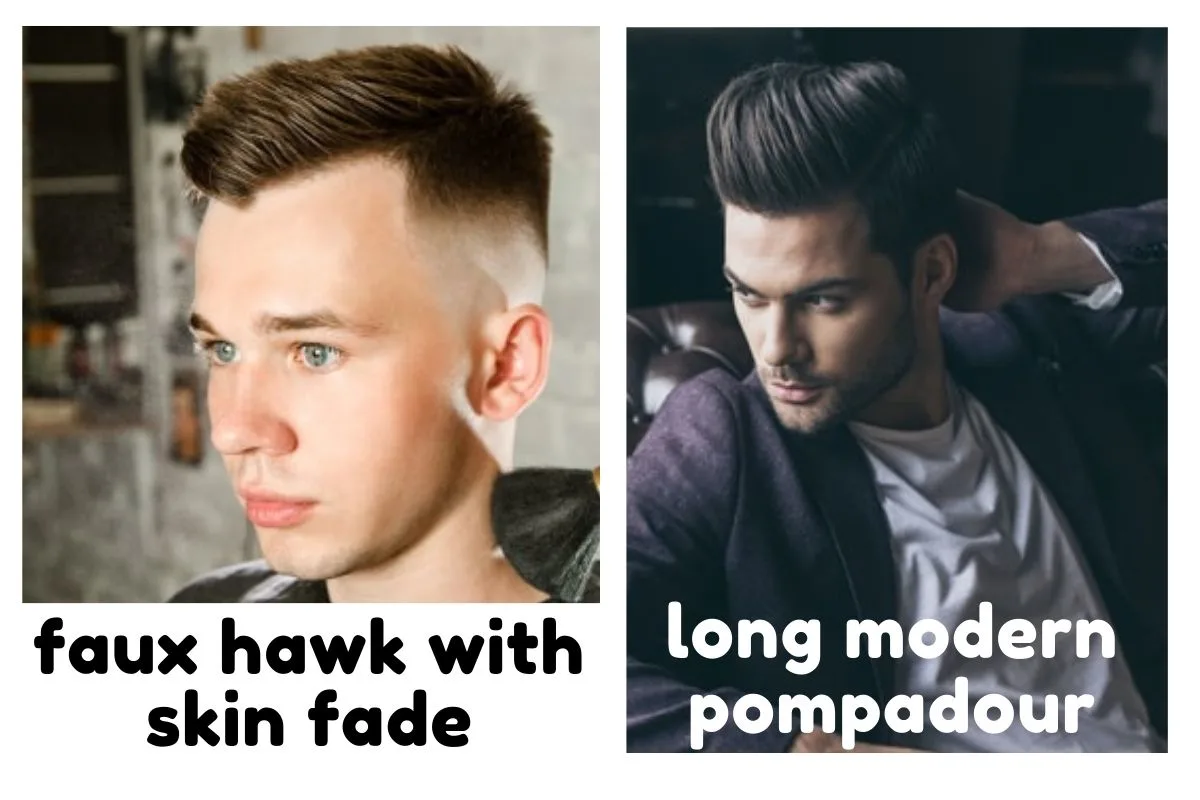
Pompadours have more of a vintage feel to them than the faux hawk.
They’re reminiscent of the ‘50s greaser movement that proved to be so influential in the world of men’s hair.
The shapely appearance of the pompadour was often produced using shiny products like oil-based pomades and waxes.
They’re known for being big, defined, and glossy.
Sure, there are more modern variations that are more subtle and even more textured. But the traditional pompadour usually follows that well-established formula.
Unlike the pompadour, faux hawks are more loosely defined and textured. The hair on top is often shorter than that of pompadours and usually has a characteristic strip-like, spiked appearance.
It also generally has a more modern look and feel to it than the pompadour. Although the faux hawk was fashioned on an older style – the mohawk – it still has a more modern feel to it due to the fading and tapering of the sides.
Yes, pompadours can also incorporate modern features like fades and tapers. But the shapely and tall glossiness will always have a more classic feel to it than the faux hawk.
How To Choose:
1. If you’ve got a thing for classic ‘50s styles, go for the pompadour. If you’d rather a modern variation of a classic style, go for the faux hawk.
2. If you prefer shapely, glossy, and tall styles, the pompadour may be for you. The faux hawk is a better option if you prefer more spiky, textured, and lower-shine styles.
3. You’ll generally need more length to style a pompadour – you need enough of it to sweep it all backward and have it stay that way. You can style faux hawks with shorter hair.
Faux Hawk Vs Buzz Cut
The buzz cut is a style where all of the hair is clipped down to a short, even length. In contrast, faux hawks have hair on top that’s longer than the sides and spiked up into a strip-like shape with a layered finish.
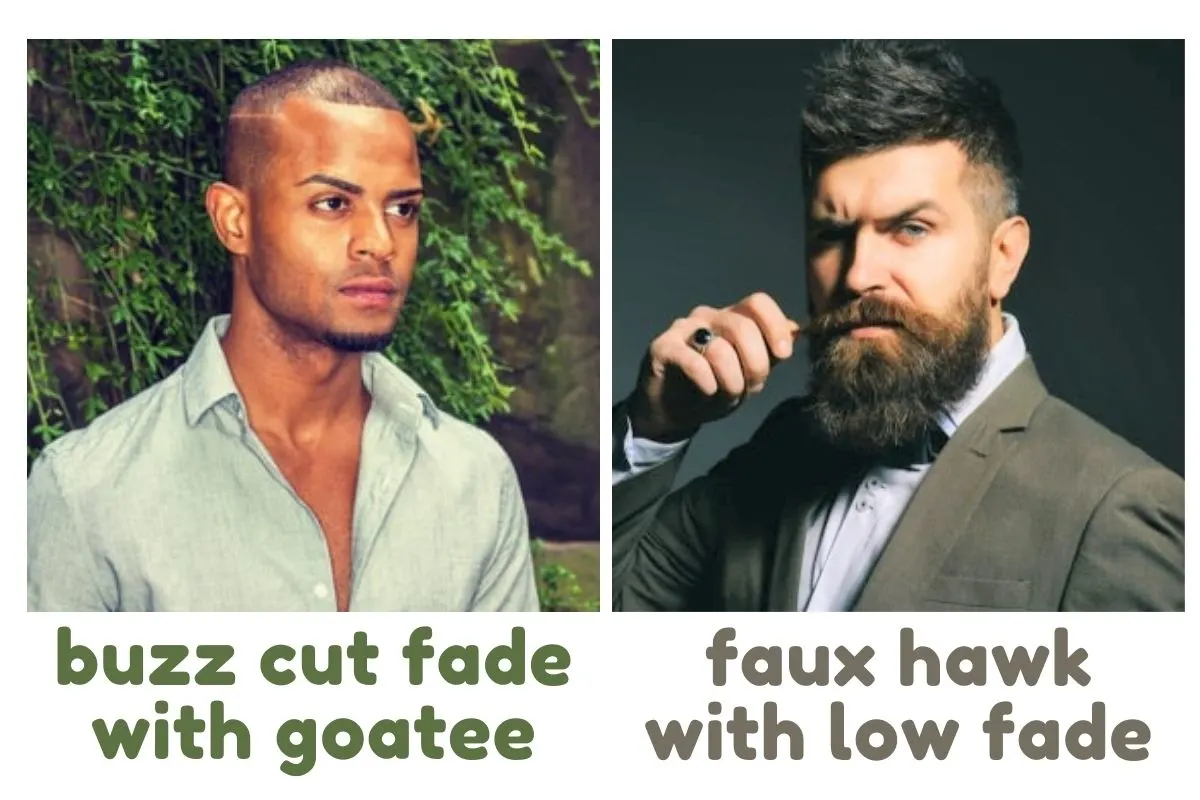
The term “buzz cut” can be misleading because it doesn’t actually refer to a specific style.
It’s actually an umbrella term used to refer to a bunch of different short men’s styles, characterized by being dependent on the use of a clipper. Crew cuts, Ivy Leagues, and Butch Cuts are technically all forms of “buzz cut”.
The style we’re comparing to the faux hawk here is the traditional, “induction-style” buzz cut where all of the hair is clipped down to the same length.
This feature makes it very different from the faux hawk, considering the faux hawk consists of long hair on top with shorter hair on the sides.
While the buzz cut is clipped equally short in all directions and dimensions, the faux hawk has a more nuanced appearance to it.
Yes, the sides and back are often “buzzed” down short as you’d expect with a buzz cut. But with faux hawks, the top is usually scissor cut with a layered finish.
You’re left with the ability to spike it all inward and upward into a strip reminiscent of a mohawk.
But remember, the difference is that this “strip” of spiky, textured hair on top is blended into the short (and often faded) sides.
How To Choose:
Here are some tips you can use when choosing between a buzz cut and a faux hawk:
1. Buzz cuts are much more low maintenance than faux hawks when it comes to washing, drying, and styling. That’s the beauty of having all of the hair so short.
2. Faux hawks are more eye-catching than buzz cuts due to the contrast between the long hair on top and the short sides. They’re a better option if you’re looking to stand out from the crowd in a subtle manner.
3. Faux hawks are better for men with round or short faces because they add height and length to the face. Buzz cuts can actually exaggerate face roundness because you’re unable to add any height at all – the hair is simply too short to do this.
Faux Hawk Fade Vs Mohawk
The mohawk has a narrow strip of hair along the center with the space on either side of it shaved. In contrast, the faux hawk fade has a more loosely defined, spiked strip of hair on top that’s blended gradually into faded sides.
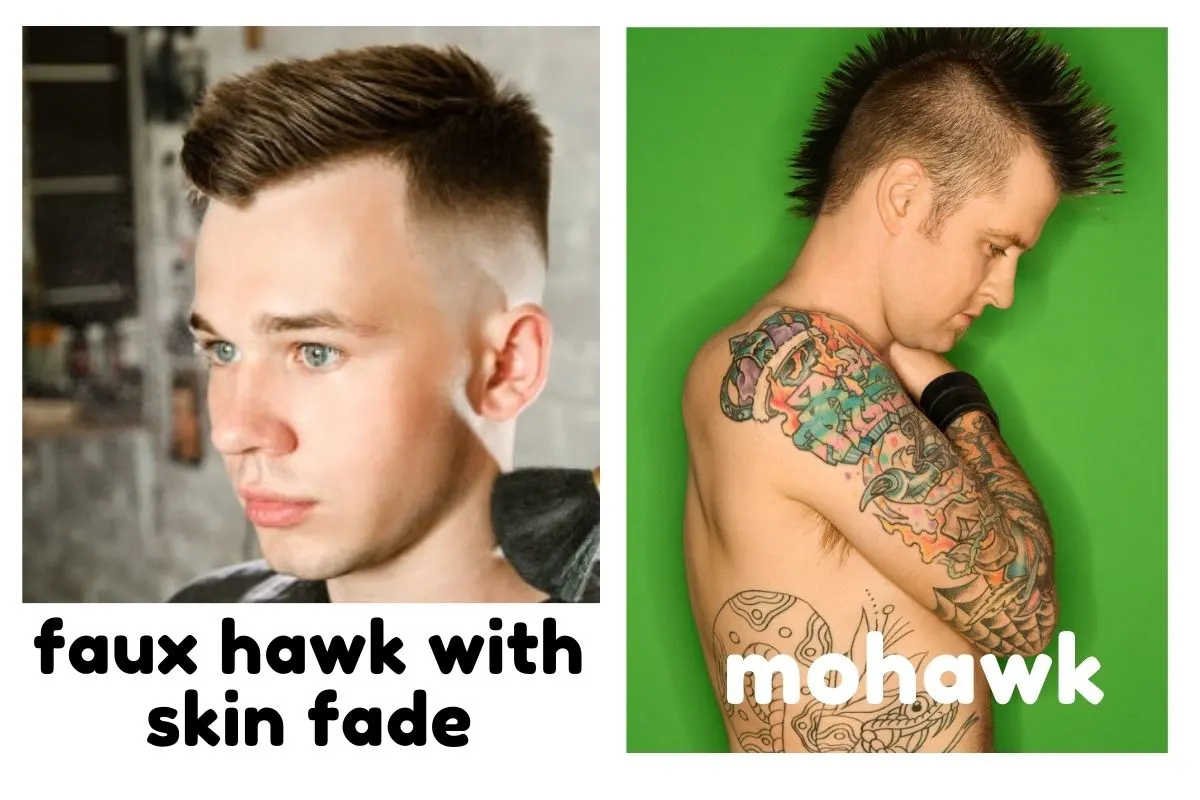
Most faux hawks these days do have faded sides, which means that the sides gradually get shorter as you go from top to bottom.
The very graded and blended appearance of this transition from long to short is what gives the fade its characteristic look.
Compare this with the mohawk and the difference is immediately noticeable.
Mohawks do not have faded or tapered sides. The famously narrow and often spiked strip of hair in the middle is usually surrounded by completely shaved (or at the very least buzzed) hair.
There’s no gradual fading down the sides – it’s all gone.
Although most faux hawks could be considered “faux hawk fades” these days given how many of them do incorporate faded sides, it isn’t always the case.
You do get faux hawks that don’t have faded sides and simply have the hair on the sides an equal length.
However, these faux hawks are still distinguished from the mohawk by the fact that the hair on the sides still blends into the hair on top.
How To Choose:
1. The faux hawk fade is more subtle and less eye-catching than the mohawk. This gives it versatility.
2. The mohawk is relatively high maintenance given the need for maintaining the shaved sides. If you’d prefer a lower-maintenance style, the faux hawk would be more appropriate.
Conclusion
Once you know what to look for, the faux hawk is actually pretty easy to identify. Understanding exactly how they’re different from similar styles is the key to doing so.
Enjoy.
Ready Sleek founder. Obsessed with casual style and the minimalist approach to building a highly functional wardrobe. Also a fan of classic, vintage hairstyles.

![The Faux Hawk Vs Other Similar Styles [Photo Comparisons]](https://www.readysleek.com/wp-content/uploads/2021/05/faux-hawk-vs-similar-styles-720x405.jpeg)
